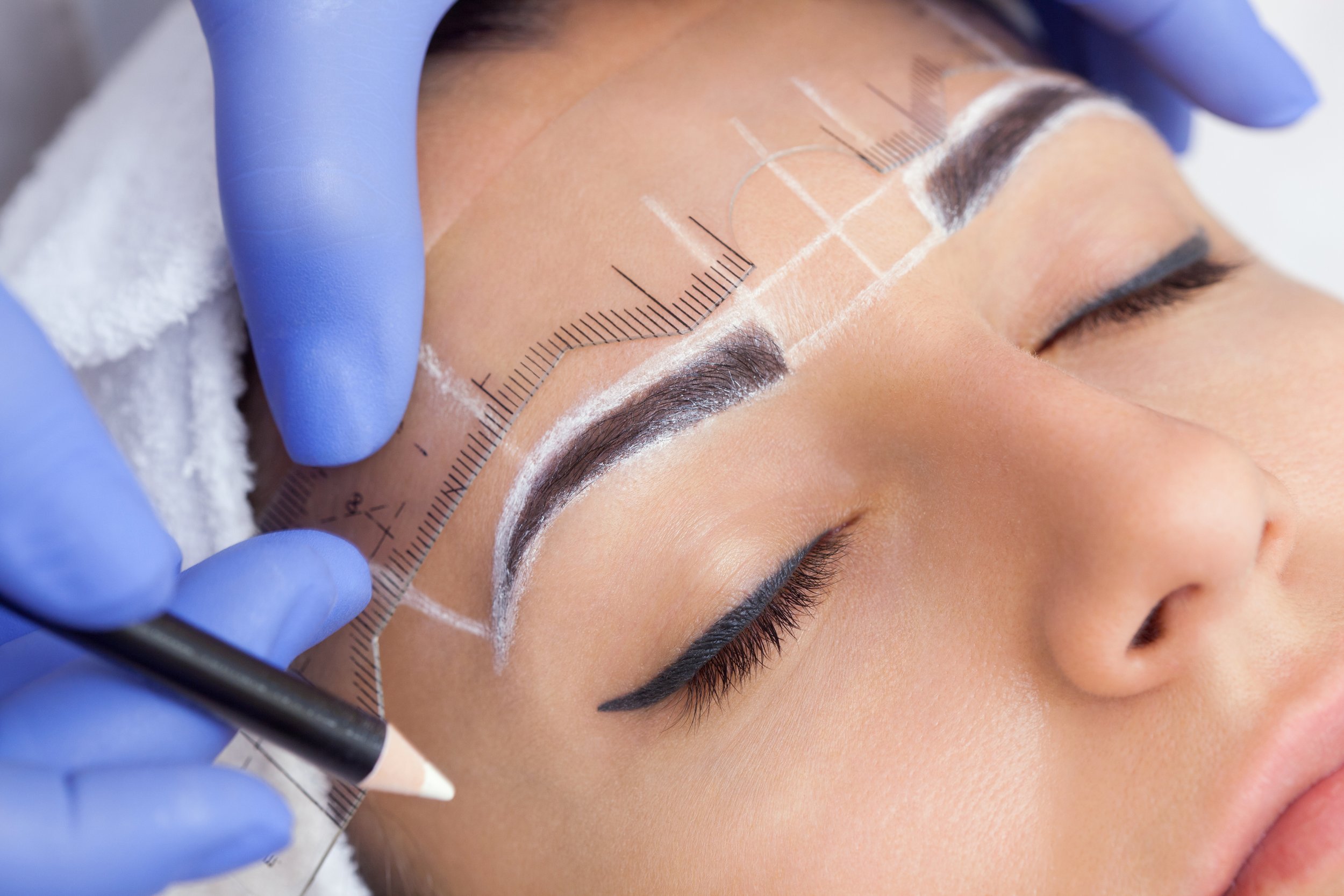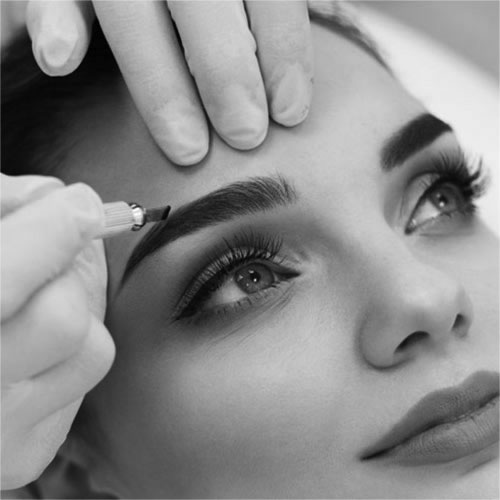MicroBlading
The semi-permanent makeup solution for stunning, natural-looking brows

What is
Microblading?
Microblading is a semi-permanent makeup procedure that involves using a small handheld tool to implant pigment into the skin. The tool is used to create hair-like strokes that mimic the appearance of natural eyebrows. The procedure is often used to fill in sparse or thin eyebrows, or to reshape the brows to give them a more defined or desired appearance.
The Microblading procedure:
The microblading procedure typically involves the following steps:
Consultation: During the consultation, the practitioner will assess your brows and discuss your desired shape and fullness. They will also explain the procedure and aftercare instructions to you.
Numbing: A numbing cream may be applied to the brow area to minimize discomfort during the procedure.
Design: The practitioner will use a brow pencil or makeup to design the desired shape and fullness of the brows. This will serve as a guide for the microblading strokes.
Microblading: The practitioner will use a small handheld tool to implant pigment into the skin, creating hair-like strokes that mimic the appearance of natural eyebrows. The procedure may take anywhere from 1-2 hours, depending on the complexity of the design.
Aftercare: The practitioner will provide you with aftercare instructions, which may include avoiding certain activities and products, and applying ointment or moisturizer to the brows. It is important to follow these instructions to ensure the best healing and longevity of the results.
It is important to note that the microblading procedure may cause some discomfort, although a numbing cream can be applied to minimize this. The treated area may also be swollen and red immediately after the procedure, but these side effects should subside within a few days.
What does each of the Microblading steps do?
Consultation: This helps ensure that you are a good candidate for microblading and that you have a clear understanding of what to expect during and after the procedure.
Numbing: This can help make the experience more comfortable for the client.
Design: This serves as a guide for the microblading strokes and helps ensure that the final result is symmetrical and aesthetically pleasing.
Microblading: This is the main part of the microblading procedure, and it involves carefully placing the pigment in the skin to achieve the desired brow shape and fullness.
Aftercare: Aftercare is a crucial part of the microblading process and can help ensure that the brows heal properly and maintain their desired appearance.
Led Therapy:
These include:
- Amber.
- Blue.
- Red.
- Green.
Sometimes, different LED lights are combined with a photosensitive drug called 5-aminolevulinic acid. This medicine is applied to the skin and used in combination with the LED light. While this might make your skin more sensitive to light, it helps the treatment — also called photodynamic therapy — work better.
Led light therapy lights are used for lots of different skin conditions. Receiving light therapy from Royal Med Spa is a promising skin treatment.

Benefits
- Some potential benefits of microblading include: Natural-looking results: One of the main advantages of microblading is that it can create very natural-looking brows. The hair-like strokes mimic the appearance of real brow hairs, so the final result looks more like your own brows than a tattoo. Customized shape and fullness: During the consultation, you can work with the practitioner to design the shape and fullness of your brows. This allows you to customize the final result to suit your desired look. Long-lasting results: The results of microblading can last anywhere from several months to a couple of years, depending on a variety of factors such as skin type and lifestyle. This means that you can enjoy the benefits of fuller, more defined brows without the daily maintenance of brow makeup. Low maintenance: Because the results of microblading are long-lasting, you won't need to worry about filling in your brows or shaping them every day. This can be especially convenient for people who have sparse or thin brows, or who have difficulty applying brow makeup. Non-invasive: Microblading is considered a non-invasive procedure, as it does not involve any incisions or the removal of skin. This makes it a less risky and more comfortable option for people who are looking to enhance their brows. It is important to note that microblading is not suitable for everyone, and it is important to choose a reputable and skilled practitioner to ensure the best results and minimize the risk of complications.
